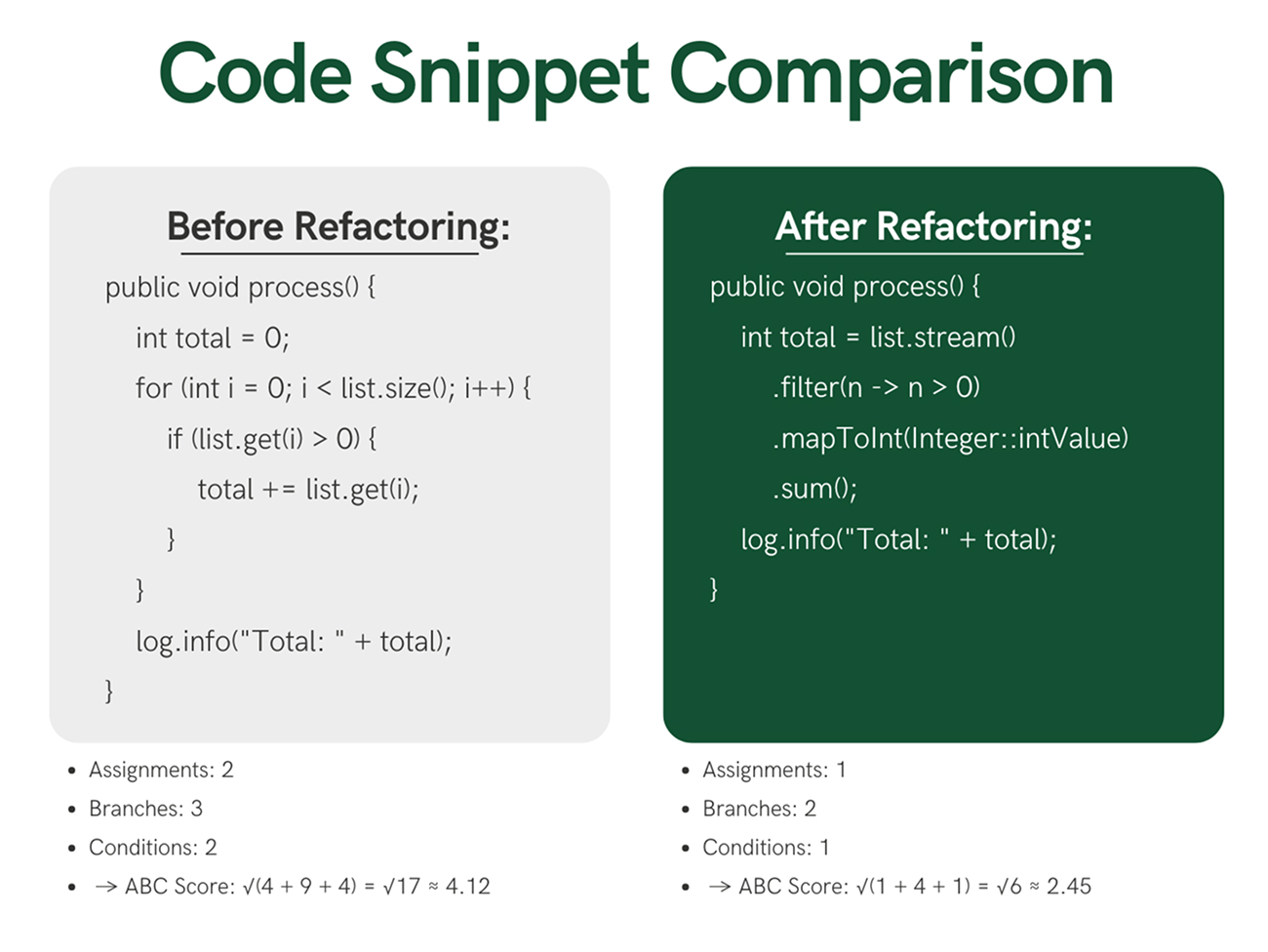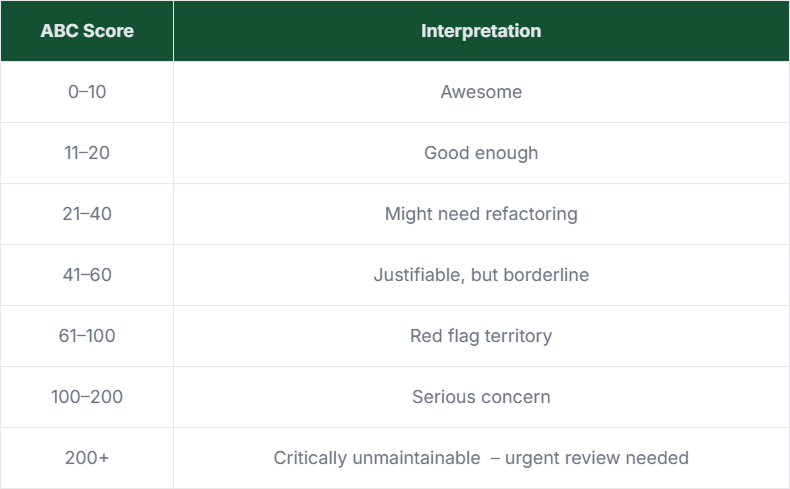In software engineering, understanding code quality and structure can be challenging. Metrics can help evaluate how well code is written and maintained. The ABC metric is one such approach; it provides a clear measure of code size and structure based on how the code operates.
Originally introduced by Jerry Fitzpatrick in 1997, the ABC metric focuses on counting key code operations (assignments, branches, and conditions) to provide insight into the amount of action taking place in a method or class. Unlike some metrics that indirectly measure complexity, ABC is straightforward and tangible. Let’s break it down.
What is the ABC metric?
The ABC metric is a software quality metric that measures the size of code by counting three specific operations:
- A = assignments: transferring values into variables.
- B = branches: method calls, function calls, or jumps in execution.
- C = conditions: logical evaluations or decision-making operations.
These are then used to calculate a single numeric score using this formula:

This magnitude provides an at-a-glance view of how dense or active a piece of code is, though individual A, B, and C values are often more insightful for code reviews.
Why ABC isn’t a complexity metric
A common mistake is to assume ABC measures complexity. It does not.
“ABC is strictly a size metric, not a complexity metric. Its role is to indicate how much a method does, not necessarily how difficult it is to understand.” , Jerry Fitzpatrick
For instance, the B value (branches) may resemble cyclomatic complexity, but ABC doesn’t capture nested logic, recursion depth, or other complexity factors.
How does it work in practice?
Depending on the programming language, the ABC rules may vary slightly. Here’s how the metric works in most imperative languages like C++, Java, or Groovy:
Assignment (A):
- =, +=, -=, *=, etc.
- Increment/decrement: ++, –
Branch (B):
- Function or method calls
- new keyword usage
- Safe navigation (e.g., x?.y in Groovy)
Condition (C):
- Comparisons: ==, !=, <, >, <=, >=
- Control structures: if, else, case, try, catch
- Boolean expressions like if (x) or while (!ready)
Each detected element increases the relevant counter, contributing to the final ABC score.

Why developers should care
Here’s what makes the ABC metric useful in day-to-day development:
- Objective measurement: ABC offers a consistent way to measure code structure.
- Code smell detection: High scores can indicate a method trying to do too much.
- Refactoring guide: ABC scores can help prioritize which functions to simplify.
- Language-agnostic (mostly): With minor tweaks, it can be applied across multiple imperative languages.
Interpreting ABC scores
A score alone doesn’t mean much unless we know how to interpret it. Jake Scruggs, known for the Ruby tool Flog (which uses a variation of ABC), proposed these informal thresholds:

As always, context matters. Some large methods may inherently require higher ABC values by nature, but frequent offenders should still be reviewed.
Limitations of the ABC metric
Despite its strengths, ABC isn’t perfect:
- Not suited for declarative languages like SQL, HTML, or Prolog.
- Doesn’t capture control-flow depth or nested logic.
- May encourage splitting code artificially to lower scores.
Thus, although it is a useful metric in software engineering, it functions best when combined with other metrics such as code coverage, LOC (lines of code), and cyclomatic complexity.
ABC Metric Compared to Other Code Metrics

Tips for using ABC in your workflow
- Use tools like GMetrics or CodeNarc for automation.
- Review individual A/B/C values, not just the total magnitude.
- Track trends over time, especially in CI/CD pipelines.
- Avoid obsession with “perfect” scores. The goal is maintainable code, not gaming the numbers.
Final thoughts
The ABC Metric is a clean and accessible tool for evaluating a method’s effectiveness. While not a silver bullet for code quality, it plays an important role as a software quality metric when combined with sound judgment and complementary tools.
“Metrics are like instruments in a cockpit, they don’t fly the plane, but they help the pilot fly better.” – Unknown
Use ABC wisely, and you’ll have a sharper view of your codebase, and cleaner, more maintainable code to show for it.
